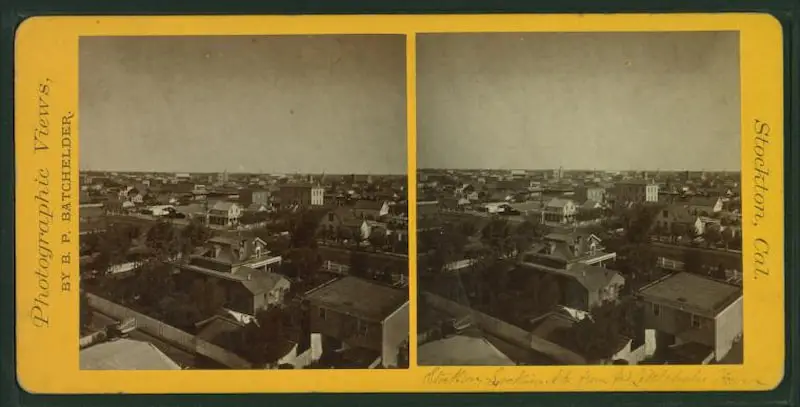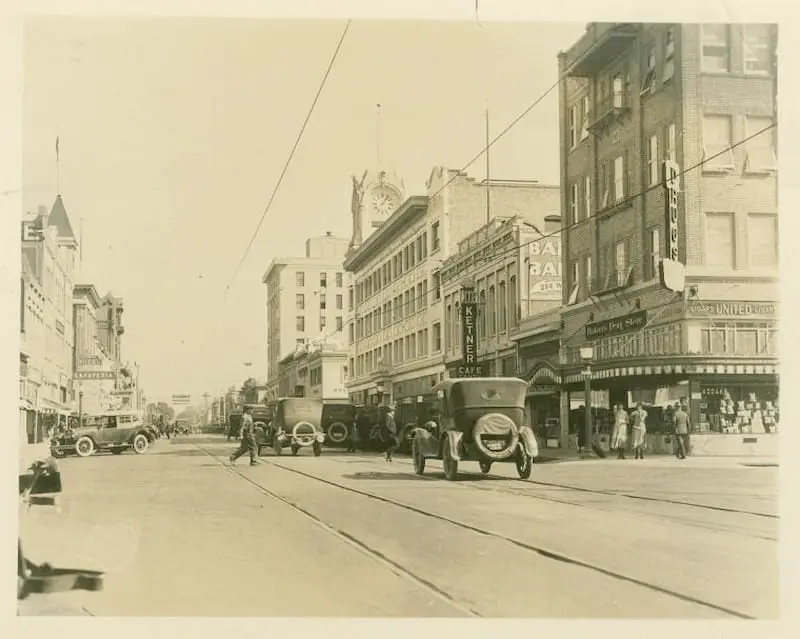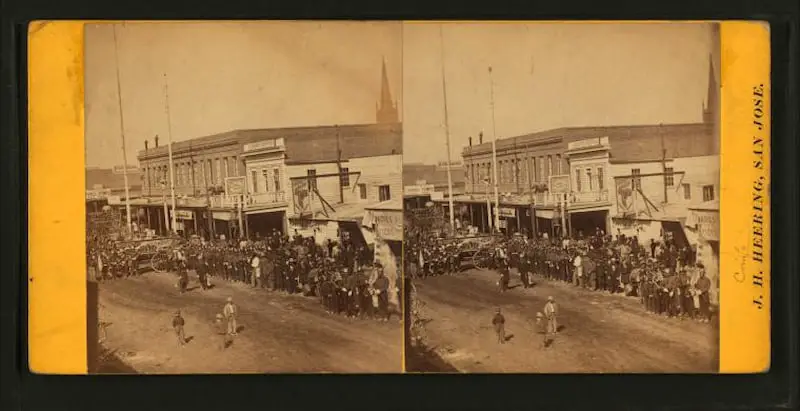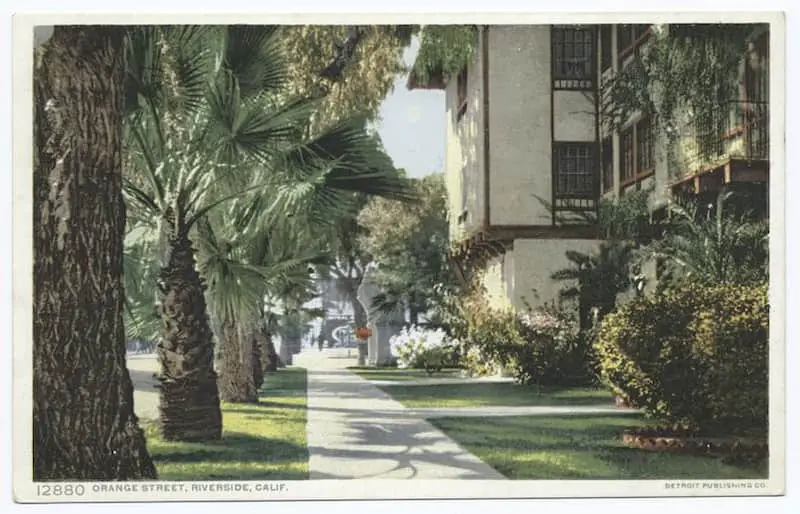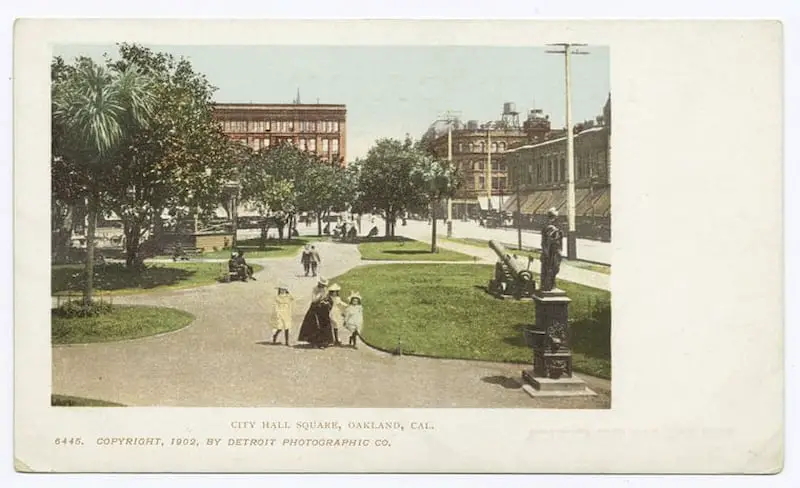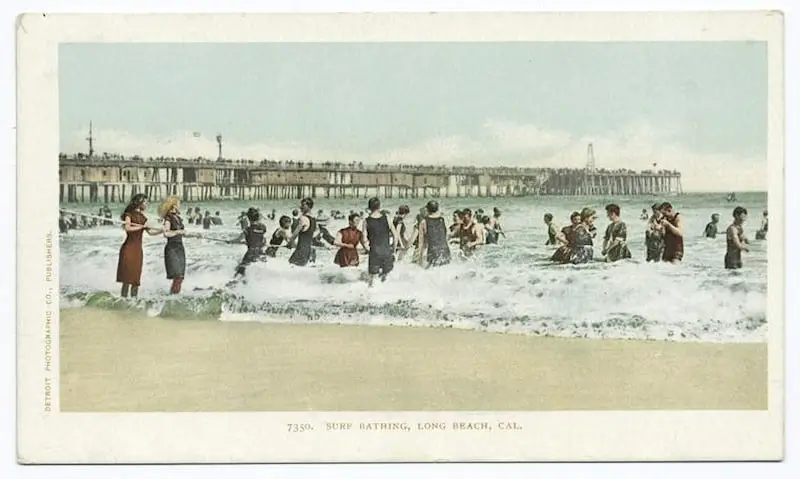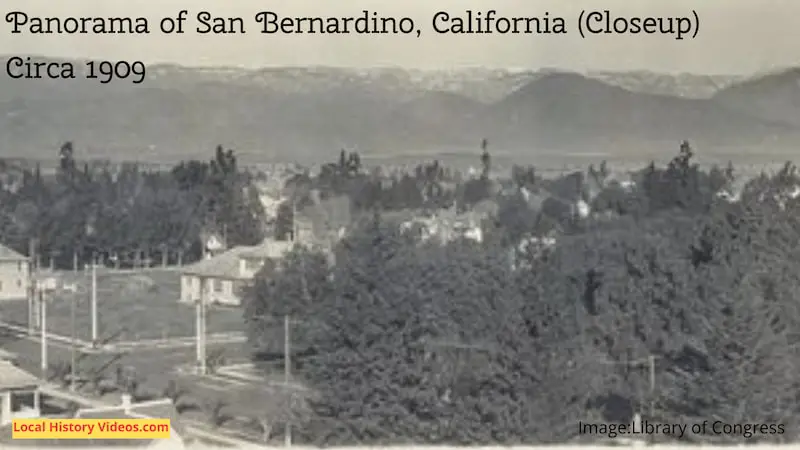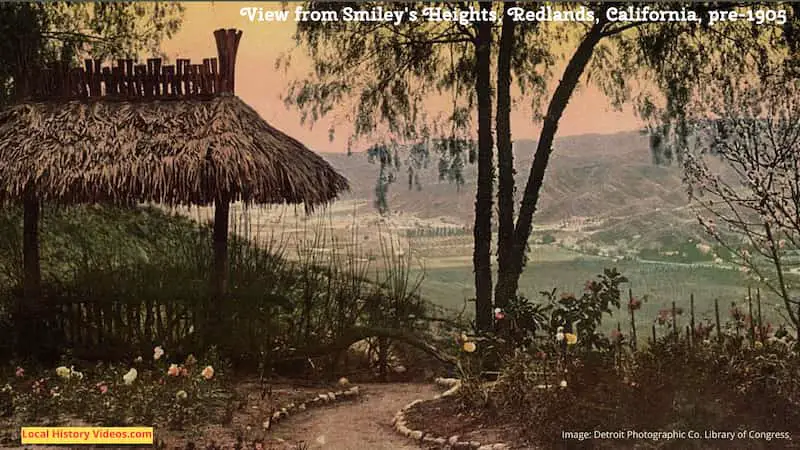Discover fascinating California Gold Rush facts and images and find out why it was so pivotal to US history and the country’s legacy.
The gold rush in California had significant effects on the American economy, transforming California into an economic powerhouse and leading to the integration of California into the national market. The gold rush also had global economic consequences, benefiting countries around the world. However, it also had negative social and environmental impacts, including the displacement and mistreatment of Native Americans and other people of color.
The California gold was discovered by accident – and kept a secret!
On January 24 1848, James Marshall was down by the American River, building a sawmill for Swiss immigrant John Sutter, who owned a large farm.
James spotted something shiny in the water – Gold!
He took the glitter pieces back to John Sutter, who asked his cook Jenny Wilton to check if it was really gold. She used a chemical she used for soap and clothes detergent, and determined it probably was gold.
They tried keeping it a secret, knowing what would happen to the area if people found out about the gold.
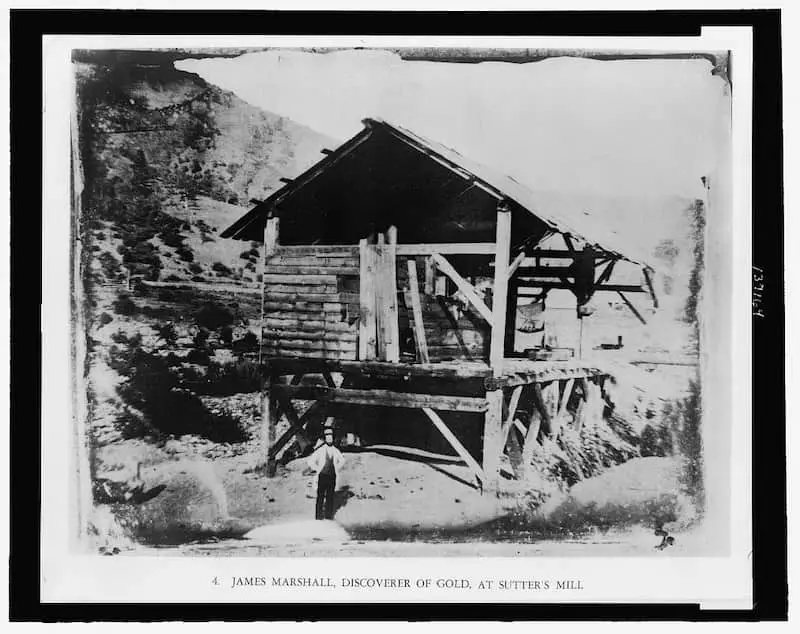
This was just 9 days before the Mexican American War of 1846-48 ended. The US had taken possession of California as early as 1846, but if the war had turned out differently, this might have been part of Mexican history.
The secret was broken by a Mormon store owner in San Francisco
John Sutter travelled to the port of San Francisco, where a few thousand people now lived, so he could get someone to tell him whether it was really gold or not.
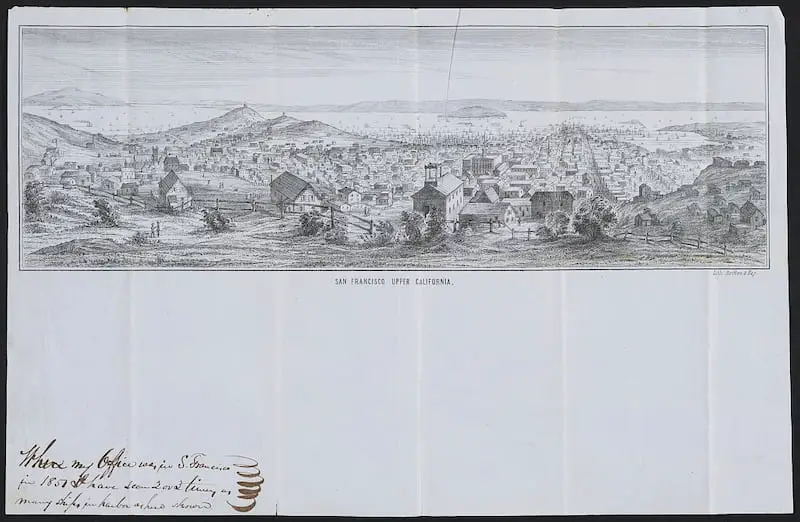
Sam Brennan was part of a Mormon community who had settled in San Francisco after being treated badly by Americans elsewhere. He opened a store near Fort Sutters.
Sam realised that if there was gold nearby, he would make a fortune selling everything the miners needed. He quickly got stocked up on shovels, picks, and placer pans, then began announcing the news.
California was sparsely populated when gold was discovered there
It’s estimated that approximately 150,000 thousand native Americans were living in California in 1848. That was about half their population of previous eras. The incomers and new diseases had badly affected their survival rates.
Descendants of Spanish and Mexican settlers who colonized California from the mid eighteenth century to the mid nineteenth century numbered somewhere between 6,000 and 12,000 people at the time. Their settlements were concentrated on the west coast.
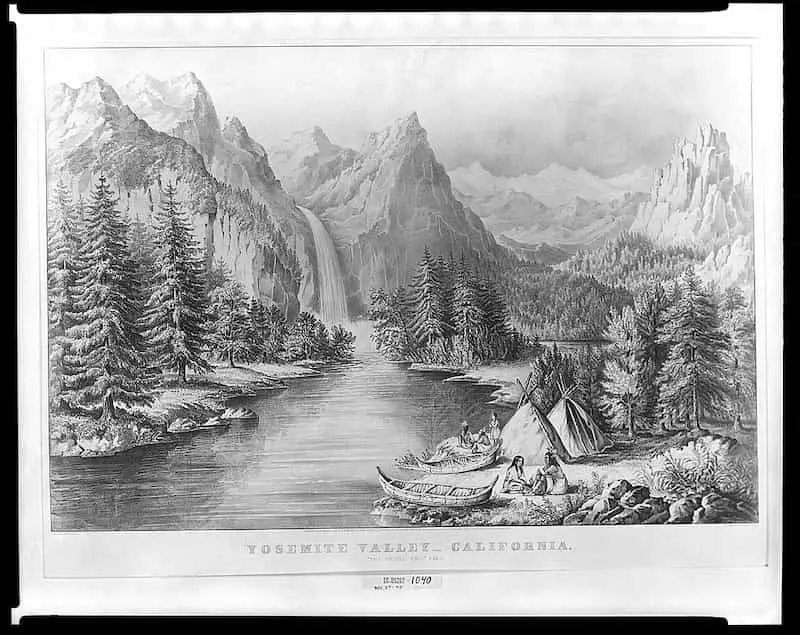
Because of the potato famine of 1845 in Ireland, quite a lot of Catholic Irish people came to California when it was still under Mexican rule. They were given land in Marin County, known as Little Island. They had learnt Spanish in their new home.
When the Gold Rush started, there were only six Chinese people living in California.
Everything was about to change.
Most Californian settlers were mostly ranching and farming before the Gold Rush
Many of the native Americans were living in the mountains, having been driven off the plains by the Mexicans.
Others were busy working for settlers, including John Sutter, and in the South East of California, the Mohave and the Yuma cultivated squash and beans and corn.
Settlers were ranching, farming, and fishing.
Their small ventures were supported by laborers such as James Marshall and domestic workers like Jenny Wilton.
No one expected to find gold in California
Until 1848, gold discoveries centred in Mexico. Silver was found in Peru.
People didn’t understand geology well at the time, or they may have wondered about the mountains.
And of course it wasn’t even in the mountains that the first gold deposits were found. Instead, the surface gold appeared in the rivers.
The first prospectors destroyed Sutter’s farm
John Sutter had been right to keep the gold discovery secret.
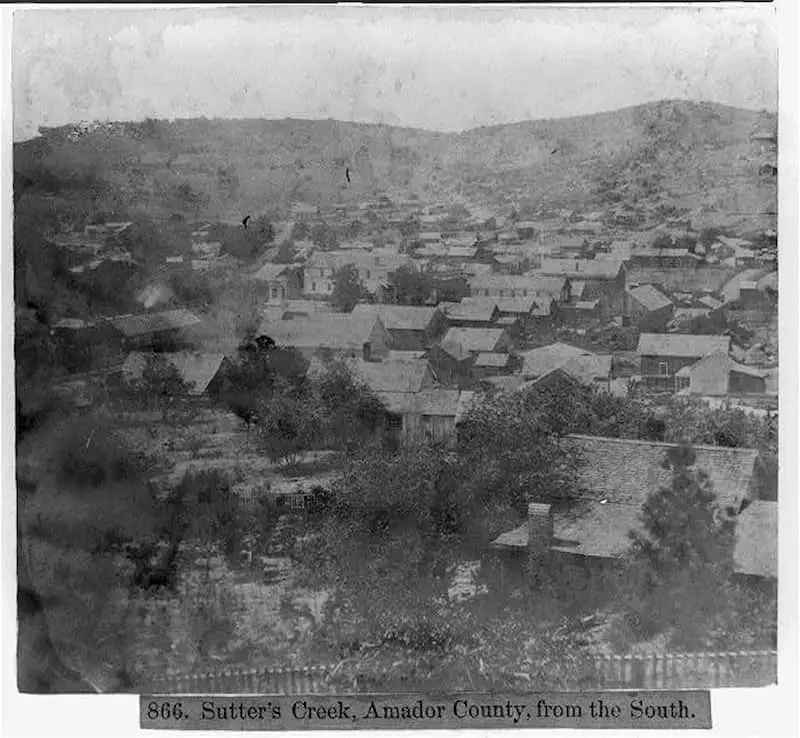
After Sam Brennan had aroused interest in and around the San Francisco area, lots of Hispanic and Hawaiian prospectors came to find their fortune.
Enough people turned up to destroy Sutter’s livelihood. They ate his cattle, and destroyed his buildings.
And this was before the gold rush had even started!
The California Gold Rush was started by a US President
Word was quickly getting out of San Francisco that there was gold in California. By August 1848, even the New York Herald had published a story about it.
But California was far away, remote, and difficult to get to.
Then some officers investigated, and went back to report their findings to the United States President James Polk.
When President Polk made his State of the Union message in December 1848, he declared that “the abundance of gold in that territory are of such an extraordinary character as would scarcely command belief”.
The world took notice.
The California Gold Rush caused migration on a massive scale
Before the gold rush got underway, most of the arrivals were Mexican and Hawaiian.
From 1849 on, immigrants to California arrived from 21 US states, and 25 countries, including Chile, Peru, Mexico, China, Germany, France, England, Ireland, Australia, Britain, and Hawaii.
In 1852, 67,000 people immigrated to California. Almost a third of them, 20,000, were Chinese.
Citizens from Japan and Russia were barred entry to the US at the time.
The journeys were long, arduous, expensive, and sometimes dangerous.
Mostly young men, the migrants took long sea journeys, traveled on overland mules, battled diseases and crime, and carried everything they needed through long periods of treacherous terrain. They saw fellow migrants die of heat, cold, hunger, disease, and injury.
Companies of friends, relatives and new acquaintances banded together to try to overcome the many dangerous risks.
Once in California, many migrants headed into the mountains, hoping to secure their fortune.
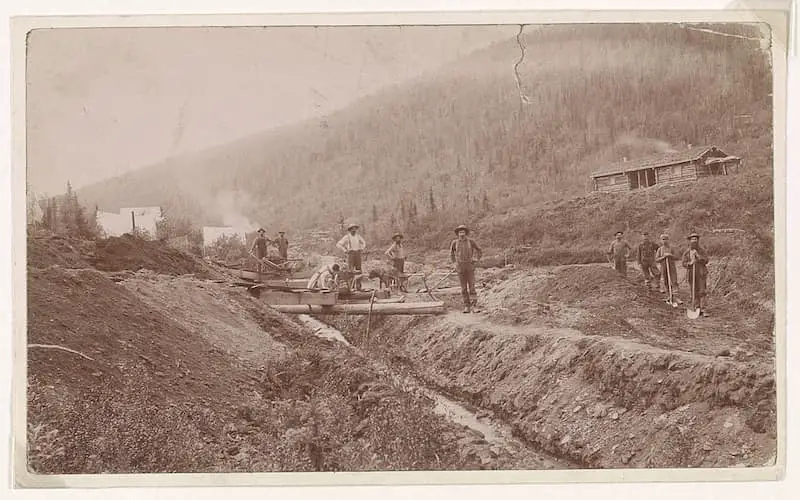
Others settled in San Francisco, to work in the supply chains and export chains supporting the mining industry, or in trades to support the rapidly growing city.
Before California’s gold rush began, the streets of San Francisco were dominated by wooden buildings. Within a decade, nearly all of them had been swept away by repeated fires and redevelopment, and the modern city had significantly expanded beyond it original settlement, both in area and population.
The mining industry was quickly industrialized
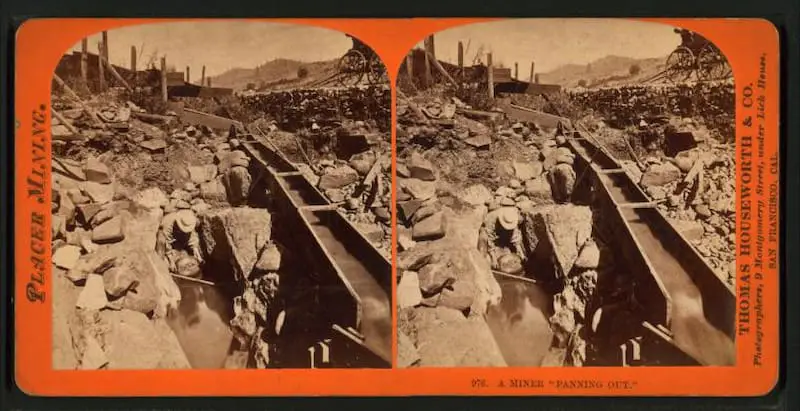
The gold panning with sieves by individuals was very quickly replaced by large scale industrial mining methods. Mining became capital and labor intensive.
The extraction of gold resulted in massive amounts of earth being dug out – about 12 million tonnes – and dumped into the riverbeds.
Dams, flumes, hydraulic mining, dynamite, and quicksilver (mercury) quickly caused a lot of significant environmental damage, blasting out entire mountainsides and destroying riverbeds.
The idyllic and beautiful landscape was being destroyed.
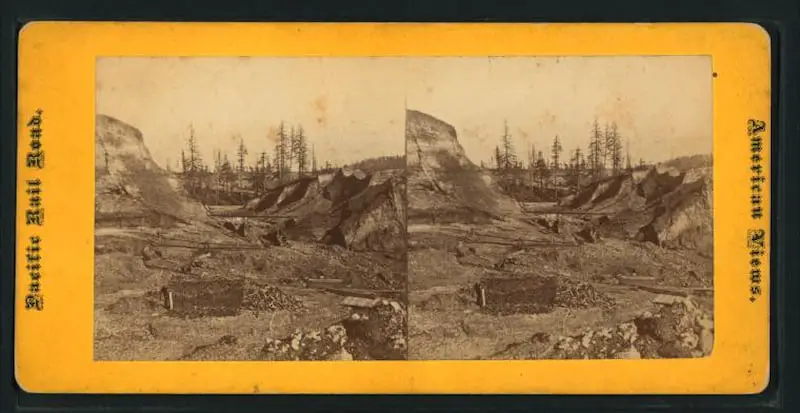
Additionally, the use of mercury in the extraction process caused ongoing pollution in the riverbeds. About 100,000 tonnes of mercury were used, ending up in the riverbeds. Even today, if you start dredging in those rivers, it releases the dangerous mercury again.
These new methods put the industry into the hands of those who had capital to invest, at the expense of the lone workers.
Miners dug for gold, but sometimes found quartz
The hard, crystalline mineral quartz makes a good, and less expensive, substitute for diamonds in jewelry.
So even if the more valuable gold was not found, miners could make some money extracting any quartz they discovered.
Between 1848 and 1851 the amount of gold coinage in the USA increased twentyfold
Approximately $600 million dollars worth of gold was extracted between 1848 and 1860.
That’s many billions in today’s money.
It caused a rapid increase in prices, especially in San Francisco where prices skyrocketed because lots of people suddenly had gold to spend.
Women worked in the gold rush territories
About 90% of people in California in 1849-50 were men, and mostly young men at that. The women were there to work too, even though it was a dangerous environment.
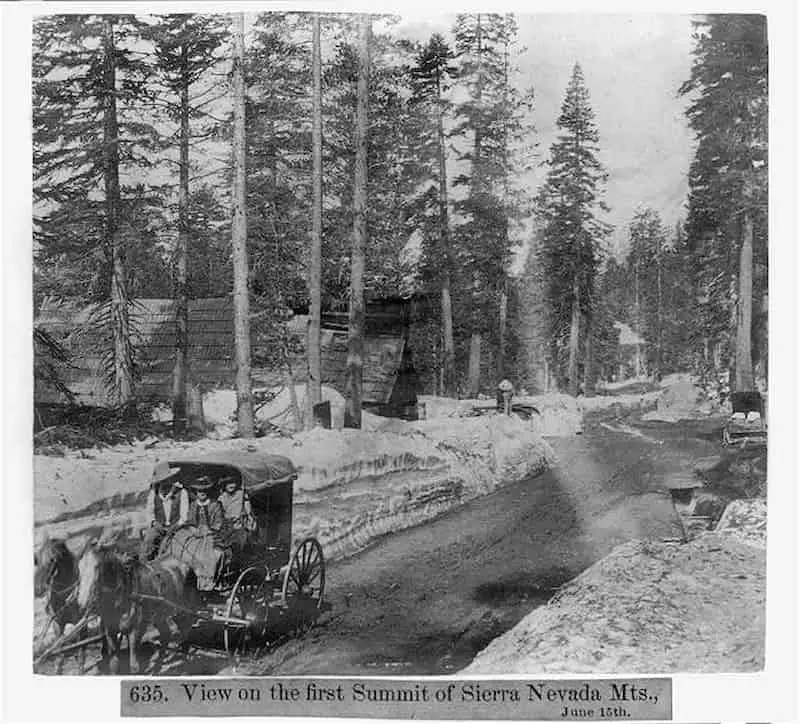
Some women ran boarding houses while their husbands worked in the mines. They’d cook for their tenants, who would sleep on the floor.
Women also worked in bars, and to entertain men.
Many of the latter were female Chinese slaves brought in by wealthy merchants and sold at auction. They had been kidnapped from the Chinese countryside, or lured away with false promises. Other women were indentured servants.
The Chinese women working in this industry accounted for 583 of the 681 Chinese female immigrants of the 1850s. The most famous was Ah Toy, who began working in San Francisco in a shack that was four feet wide and six feet deep.
It was easier to get a divorce in California than anywhere else
During the gold rush era, it was easier to get a divorce in California than anywhere else.
The County of San Mateo had more divorces per head of population than any other place in the world.
Part of the reason was that women were in short supply, so it made them valuable in society.
There was also the surprising right for women to own property written into the Constitution in 1850. So women had an economic power not seen in many places.
It quickly became dangerous to be a person of color
There were no property rights, other than a system inherited from the previous Mexican rulers of how you staked out a claim.
There was a military governor and a contingent of the army, but they oversaw a huge territory with very unstable populations.
There were no banks, just lots of people walking about with gold in their pockets.
And people had been warned to arm themselves with guns and knives before coming to California.
Crime was rife, and violent.
Whipping and hangings from informal courts and mob actions increased.
As the supplies of gold diminished and as the number of people arriving increased, tensions increased further. Suddenly, the Chinese, Hawaiian, South America, and in particular the Mexican prospectors were at risk. Between 1849 and 1856, there were 163 people of Mexican descent lynched, including a woman.
Even once California had become a state, the laws that were passed by the legislature were very much discriminatory against the Hispanic population and the native population.
Meanwhile, the Chinese laborers increasingly found themselves victimized. Crucial to the mining industry, by the end of the 1850s they made up one-fifth of the population in the Southern Mines. They then took on the most difficult and dangerous work in the railway industry in the following decades.
But as competition for work intensified, others looked jealously at their jobs and income.
In 1871, a mob of over five hundred people in Los Angeles lynched and killed 18 Chinese men.
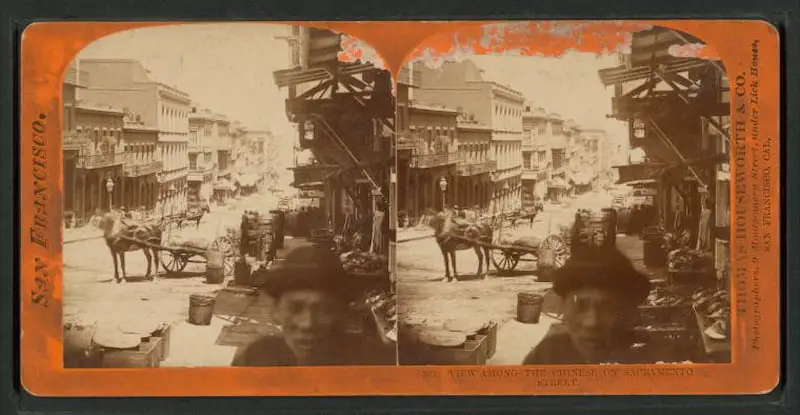
Then in 1882, President Chester A. Arthur signed the Chinese Exclusion Act, a federal law that prohibited all immigration of Chinese laborers. It took six decades before the Magnuson Act or Chinese Exclusion Repeal Act of 1943 before this ban was removed.
There was a French Revolution against the mining tax
Foreigners had to pay tax of 20$ a month for the right to mine in California.
A whole group of Europeans joined together with the Mexican population and had a kind of battle, known as the French Revolution.
Once the tax law was passed to remove the tax, tensions between ethnic groups returned.
Claim jumping and salting became commonplace
By rights, if you staked your claim it was yours, and if you worked your claim, the gold was supposed to be yours.
But there was increasing amounts of claim jumping. People used to push other people off when they saw they’d been a strike.
There was also the scam called salting. A person would pretend they’d made a strike, sprinkling gold around as though there was much to be taken out. They’ sell the claim on to someone else, who would then discover the gold dust was all there was.
California’s trade and agriculture boomed
During the Californian gold rush, mining was not the only way to make money. Selling supplies to miners, and building infrastructure, proved equally profitable.
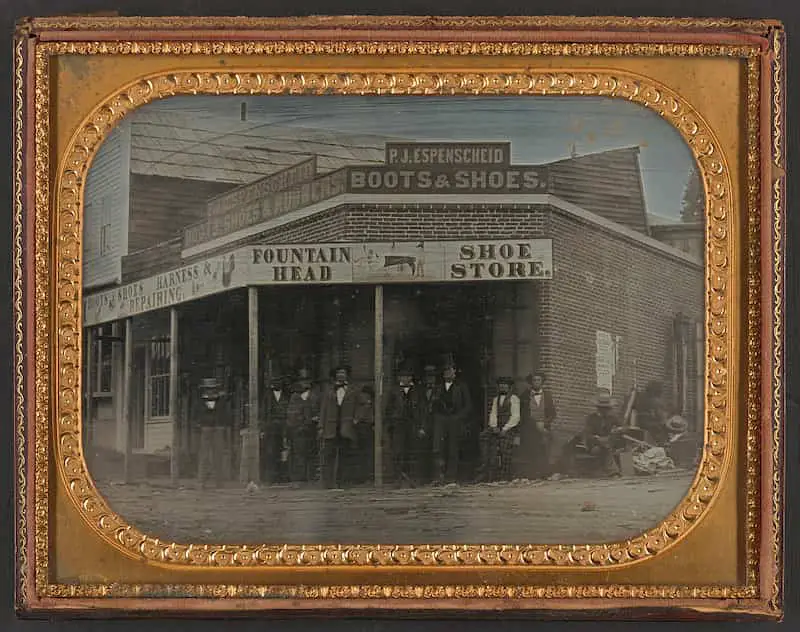
Levi Strauss became one of America’s richest men selling jeans to men working in the gold mines.
Leland Stanford also made a fortune as a dry goods merchant, helping to feed some of the 300,000 people in the area by the early 1850s.
Stanford later became a famous Western railroad tycoon. He then used his wealth to create Stanford University, which has been the core of Silicon Valley’s founding and development, making California an economic powerhouse in the 21st Century.
Meanwhile, the agricultural settlers did well too, led by the German immigrants who made up 14% of the population.
They fed the miners and the supporting settlements, and once the railroads arrived they could feed the entire country.
California became the Golden State, where people could transform their lives, and where the economy didn’t dip as it did in other parts of the country.
They came to strike it rich, and ended up staying
Many of the migrants arrived hoping to make their fortune, with the intention of returning home with more money than they left with.
Some of them did in fact return home wealthy men. Many of the men returning home came back destitute.
But many of those who made riches through trade, mining, or agriculture, and those who did little more than secure regular work, decided to settle in California, making it their home.
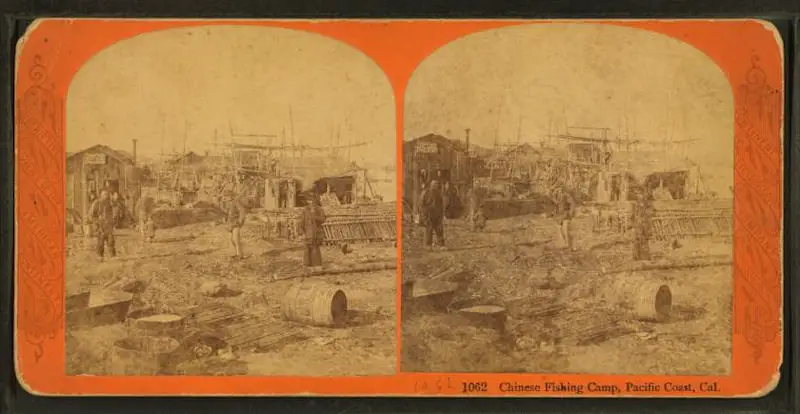
California became a state much more quickly than normal
California became a state in 1850, when it was the 31st state admitted to the United States.
The area wasn’t even a territory when the Acting Governor decided they needed the Constitution, and called together a constitutional convention.
48 men attended the constitutional convention at the Acting Governor’s invitation. These included North Americans, Europeans, old Californians, and a Native American.
By October, the convention had passed the motion, and then the voters in California supported this, passed by 15 to one.
In late December, the formal request for California to become a state was presented in Washington.
The process to create a state usually took much longer, because states were created out of a territory. California hadn’t yet been made a territory. So the Californians asking to be made a state straight away was a shock for Congress.
California’s creation led to civil war in 1861
California’s admission as a Free State in 1850 led to a majority of free states in the union.
Before then, the union had been equally divided in number between slave owning states and free states. The Missouri Compromise in 1820 set the pattern whereby Congress would admit states in pairs in order to keep the balance within the US Senate between free States and slave states.
The slave states wanted other states to be made slaves to balance it out.
Congress enacted a very complicated series of legislative actions called the Compromise of 1850, to try and appease the slave owning Southern States.
It deemed the other territories carved out of the so-called Mexican session, Utah and New Mexico, as unincorporated. They can or they will be territories, and their fate will be decided in the future, holding out the promise for Southern States that perhaps these unincorporated territories will be slave states in the future.
That set the stage for the sectional dispute that eventually, along with other events and causes, resulted in the American Civil War of 12 April 1861 – 9 April 1865.
Native American had their land, freedom and lives taken away
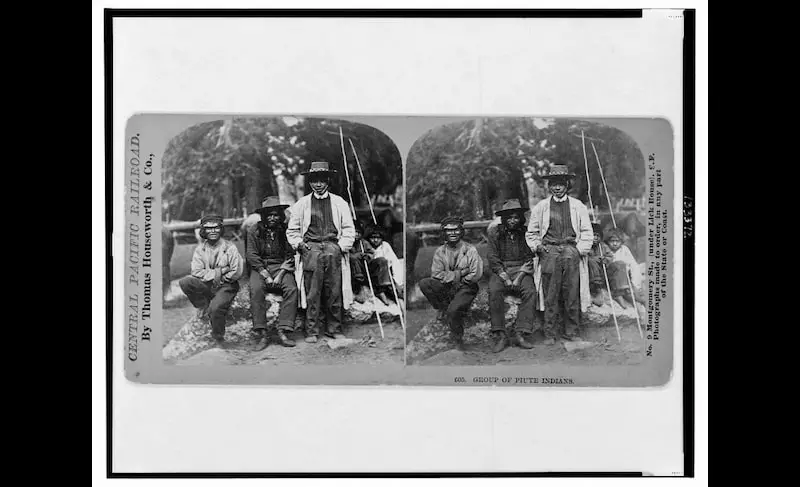
The State of California introduced a series of laws called the Act for the Governance and Protection of Indians in 1850.
They were actually a deliberate attempt to undermine or destroy an entire ethnic population and their culture by deliberate acts.
The laws seized all land from the Native Americans.
About 6,000 Native Americans were sold into slavery. All it took was being caught loitering anyone around anywhere that was selling alcohol, then they could be auctioned for servitute. Remember, this was a Free State.
As though this couldn’t get any worse, $100 million was spent on vigilante groups encouraged to massacre Native Americans.
This is the same period the Singer sewing machine was invented, the first forms of petrol was developed, and glider flights had started. Charles Darwin published The Origin of the Species, and Charles Dickens published David Copperfield and Bleak House. It’s more than a decade after the first photograph was taken and two decades after railroads started to be build in North America. This is not ancient history.
The California Gold Rush caused the American economy to overtake Britain’s economy
The discovery of gold in California had a profound global impact. The influx of gold supply caused inflation in Europe and influenced economies around the world that were dependent on gold.
Countries like Britain, Sweden, and Australia even passed laws to encourage their citizens to stay home and benefit from the gold rush, leading to a transformation of the global economy.
The Transcontinental Railroad brought more boom times to California
The U.S.’s first transcontinental railroad was built between 1863 and 1869, joining the eastern and western halves of the United States.
The people doing the dangerous work on the railroads, such as blowing up mountainsides with nitroglycerin, were often Chinese laborers.
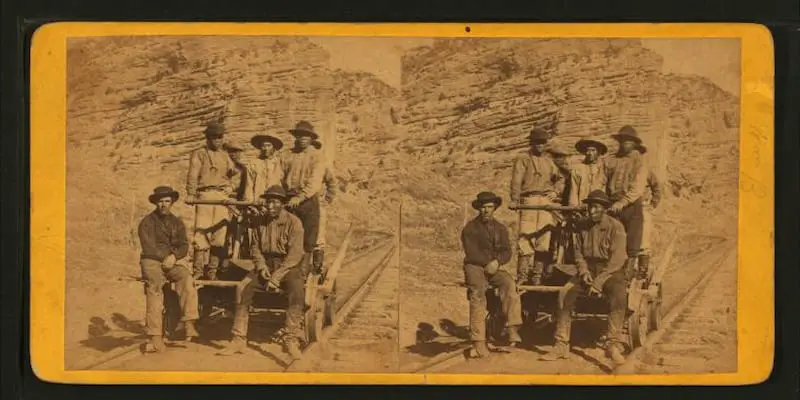
The production of iron and steel for what is considered to be one of the greatest American technological feats of the 19th century became an important part of California’s economy.
Now California is integrated into the US supply chains, with ready access to national markets for the wide range of minerals, materials and goods produced there.
Mark Twain calls this the Gilded Age.
By 1900, the United States is the world’s leading industrial power, overtaking Britain’s economic dominance.
But of course it’s stratified wealth. Money and power sits in the hands of a few. Those in the middle get a decent life. Many are struggling or living on the edge of society.
California’s success impacted people across the world
The wealth of many countries, especially in the Western world, was based on gold.
Suddenly, because of the Californian gold rush, there was lots more gold. $300 million of gold was dug out of Californian land in six years.
So people could be paid more, and people could buy more.
And since many of the new Californian workers and settlers had come from abroad, they send portions of their wealth home to their families around the world.
The incoming wealth helped countries whose economies were based around manufacturing. In Britain, the incoming funds helped families buy food and goods. And the business profits brought surpluses to be invested in infrastructure projects such as the railways, both in Britain and abroad.
It caused widespread inflation, but more seriously the dream of prosperity lured many people to leave the old world and make the long and dangerous trip to the United States, in particular places such as California.
In Sweden and Britain, the issue was so acute that the governments passed laws to improve people’s working lives at home, encouraging them to stay.
California Gold Rush Towns
- Agua Fria, California
- Angels Camp, California
- Bidwell’s Bar, California
- Blue Tent, California
- Bridgeport, Nevada County, California
- Camptonville, California
- Chalk Bluff, California
- Chinese Camp, California
- Coloma, California
- Columbia, California
- Condemned Bar, California
- Dog Town, California
- Downieville, California
- Dutch Flat, California
- Elizabethtown, California
- Fiddletown, California
- Folsom, California
- French Corral, California
- French Lake, California
- Gold Run, California
- Grass Valley, California
- Horseshoe Bend, California
- Jamestown, California
- Lake City, Nevada County, California
- Mariposa, California
- Michigan Bar, California
- Michigan Bluff, California
- Middle Bar, California
- Mormon Bar, California
- Mormon Island, California
- Mount Ophir, California
- Nashville, California
- Nevada City, California
- Norristown, California
- North Bloomfield, California
- North San Juan, California
- Ophir, California
- Ormonde, California
- Placerville, California
- Plymouth, California
- Portuguese Flat, California
- Prairie City, California
- Red Dog, California
- Ridleys Ferry, California
- Rough and Ready, California
- Shasta, California
- Shingle Springs, California
- Sonora, California
- Sutter Creek, California
- Tuolumne City, Stanislaus County, California
- Weaverville, California
- Yankee Jims, California
- You Bet, California
- Yreka, California
More about California
- California Gold Rush Facts
- Old Images of Stockton, California
- Old Images of Santa Rosa, Califonia
- Old Images of Santa Ana, California
- Old Images of San José, California
- Old Images of Riverside, California
- Old Images of Oakland, California
- Old Images of Long Beach, California
- Old Images of San Bernardino, California
- Old Images of Redlands, California

